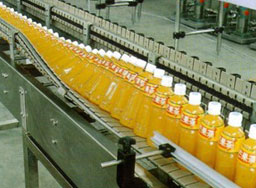
Objectives
This course focuses on conventional technologies for drinking water treatment. Unit processes, involved in the treatment chain, are discussed as well as the physical, chemical and biological processes involved. The emphasis is on the effect of treatment on water quality and the dimensions of the unit processes in the treatment chain. After the course one should be able to recognize the process units, describe their function, and make basic calculations for a preliminary design of a beverage /drinking water treatment plant.
- Clarification: helps remove suspended solids and particulate matter - usually with the help of flocculants and coagulants, which improve settling.
- Filtration: used for the physical, mechanical and biological separation of solids from treated water.
- Membrane filtration: feed water is forced through a semi-permeable membrane at high pressure to separate specific materials from the solution.
- Softening: water softening involves removing calcium, magnesium and other metal cations using ion exchange resins.
- Deionisation: used for water softening, either cationic or anionic ion-exchange.
- Reverse osmosis: uses membrane separation like membrane filtration.
- Process water polishing: Exceptional solids removal capabilities with the ACTIFLO® process. It is used for phosphorous removal and water reuse, as well as treating wet weather flows.
- Disinfection with water treatment chemicals and UV: Destroys disease-causing organisms to prevent their spread. Processes such as ozonation and ultraviolet irradiation also aid in the destruction of biological contaminants that remain in the water after treatment.
- Biological treatment: helps upgrade the quality of beverage and food industry effluent being released into the environment and a major component in water recycling from high organic load wastewater.
Upon successful completion of this course, participants will
be able to:
• Working knowledge of water quality characteristics of water sources
including: Groundwater sources, Aquifers, Surface Water sources, Reservoir
characteristics, Watersheds, Wells, Raw Water and Clear Well Storage.
• Ability to describe the purpose and operational steps of key water treatment
processes used to improve water quality including: Coagulation, Flocculation,
2
Sedimentation, Filtration, Disinfection, Corrosion Control, Taste and Odor
Control, Iron and Manganese removal, Fluoridation, and BATs (Best Available
Technologies) used for specific water quality challenges.
• Ability to Explain Operation and Maintenance procedures of equipment used
in water treatment plants and processes including; Chemical feeders, Pumps
and Motors, Blowers and Compressors, Water meters, Pressure gauges,
Instrumentation, and Electrical generators
• Working knowledge of laboratory Procedures and sampling strategies
required to ensure adequate water quality to ensure public health and for
process control including; Sample
• collection procedures, General Lab Practices, Disinfectant Residuals,
Alkalinity levels, pH levels, Turbidity levels, Specific Conductance levels,
Hardness concentration, Fluoride levels, Color, Taste and Odor, and
Microbiological testing results.
• Working knowledge of drinking water regulations and standards required to
protect public health and ensure compliance including: Safe Drinking Water
Act and amendments, Surface Water Treatment Rule and amendments,
Primary Contaminants, Secondary Contaminants, Lead and Copper Rule,
Total Coliform Rule, Operator Certification Regulations.
• Demonstrate overall competency in solving water mathematics problems
including: unit conversions, pressure, head, volume, area, flow, velocity,
detention time, dosage calculations, solution concentration calculations,
plant efficiency, and compliance calculations.
- Teacher: Prof. Dr. Md. Bellal Hossain
